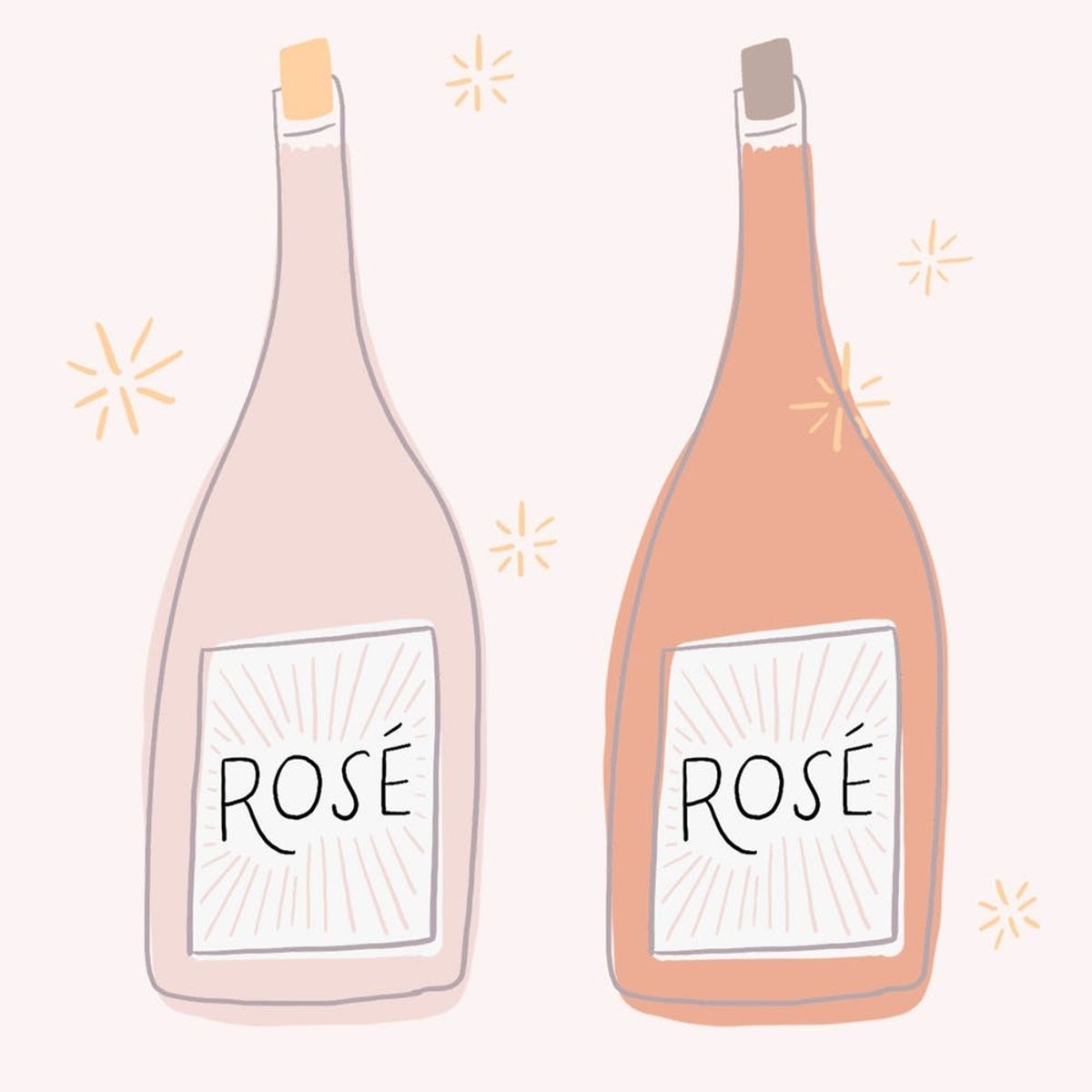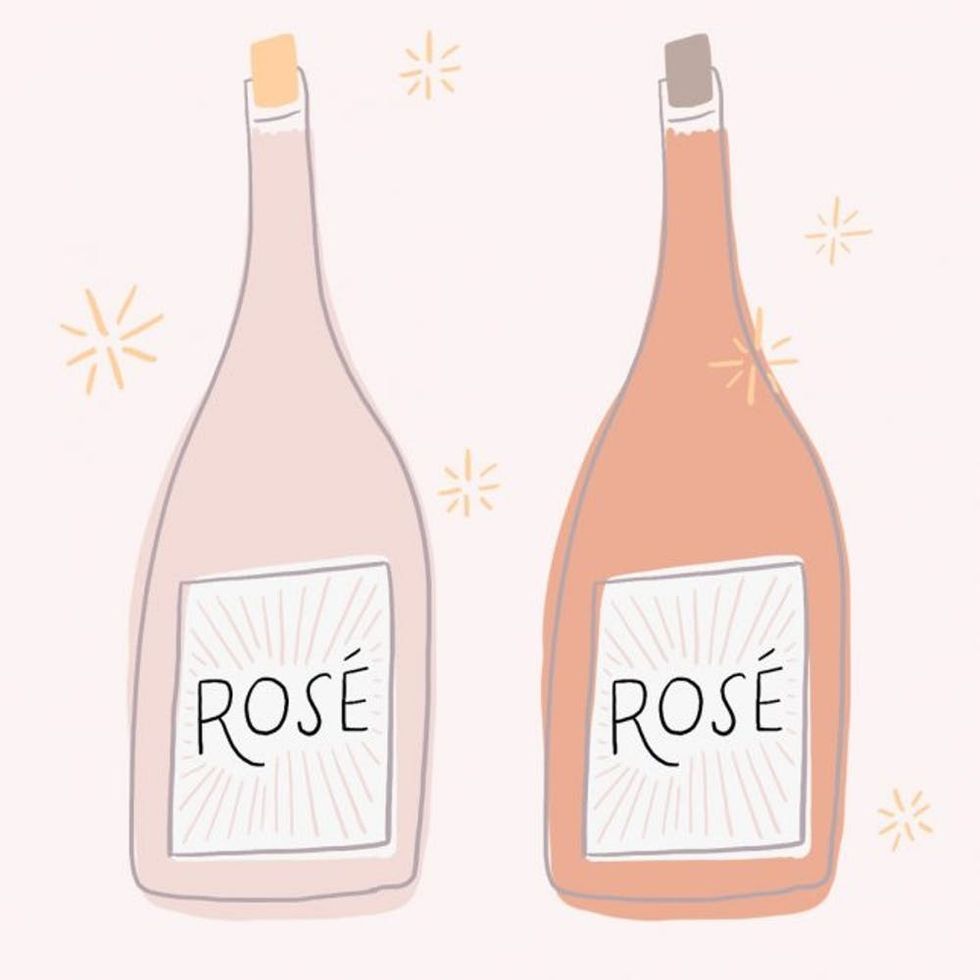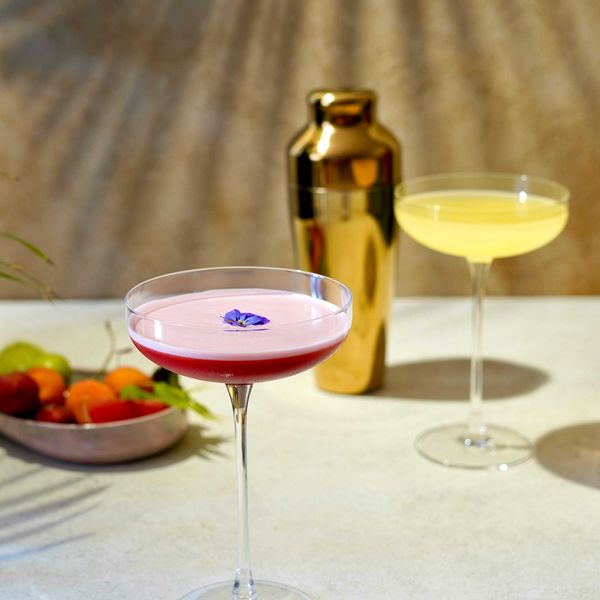We answer the age-old question: Is there such a thing as pink grapes?
Everything You’ve Ever Wanted to Know About the Color of Your Rosé

We all love rosé. It can be sweet, dry, bubbly, acidic… rosé is basically *everything.* However, if you’re absolutely mystified by rosé (is it made with pink grapes? Where do the best rosés come from? How come some are pinker than others?), you’re not alone. Rosé is a fabulous wine for pairing with grilled meats, and it’s also handy for making rosé cocktails. But when it comes to the colors and hues of rosé, it’s not all fun and games — this is serious business. Here’s what you need to know.

Rosé Comes In A Broad Spectrum of Colors
Though most of it generally falls under the umbrella of “pink,” rosé actually comes in a TON of different hues. In fact, according to Food & Wine, wines ranging in color from practically clear to dark purple can be classified as rosés. It’s up to wine researchers and winemakers to catalogue the world’s rosés and their broad spectrum of colors — and wine researchers in Vidauban, France do exactly that. There’s literally a research facility in Vidauban, which is located in the French region of Provence, at which wine researchers plot various vintages of rosé on a color graph.
The South of France Is The Rosé Capital of the World
Speaking of Provence, it’s no secret that France has always made fantastic wines, but this is especially true when it comes to rosé. Southern France is the birthplace of rosé wine, with fantastic vintages coming from Provence, Languedoc-Roussillon, and the Loire Valley. The reason these regions tend to produce such fine rosés is because their climate is agreeable to growing super flavorful grapes like Grenache, Carignan, and Syrah.
Rosé Can Be Made from Three Different Methods
HOLD UP. Grenache? Syrah? These are our favorite red wines! That’s right, rosé is made from red grapes. It becomes lighter in color and different in taste via three different methods, according to Wine Folley: the maceration method, the vin gris method, and the saignée method.
Maceration refers to a process in which grapes are crushed and then allowed to sit in their skins for a particular period of time. In rosé production, the skins are only left attached to the grapes for a short while, resulting in a lighter color and more delicate constitution than you’ll find in red wines. After the grapes are separated from the skins, the grapes then ferment, which is the process that produces alcohol and turns them into wine.
The vin gris (which translates to “gray wine”) method is essentially the same as the maceration method, but it involves barely leaving the skins on the grapes for any time at all, resulting in an extremely light color.
Finally, the saignée method is actually a byproduct of red wine production. During the fermentation of red grapes, some of the juice is removed, which is then further processed into a rosé.
So, there you have it: No, pink grapes don’t exist. Yes, there are a variety of colors that qualify as rosé. And it took a lot of work to produce that delightful pink wine you like to sip by the pool.
Follow us on Pinterest for more food and drink news!


















